Back in the early days of the internet, no one could have guessed that everyday people with a phone and Wi-Fi would go on to build massive audiences, full-time careers, and global influence.
But that’s exactly what happened—and it’s all thanks to the rise of the creator economy.
From YouTubers turning hobbies into empires to TikTokers launching product lines overnight, the digital world has opened up an entirely new way to earn, connect, and grow.
And this isn’t just about influencers anymore—millions of creators are now building businesses and changing how brands reach consumers.
So just how big is this movement?
We’ve gathered the latest and most important creator economy stats to show you what’s happening right now—and where it’s headed next.
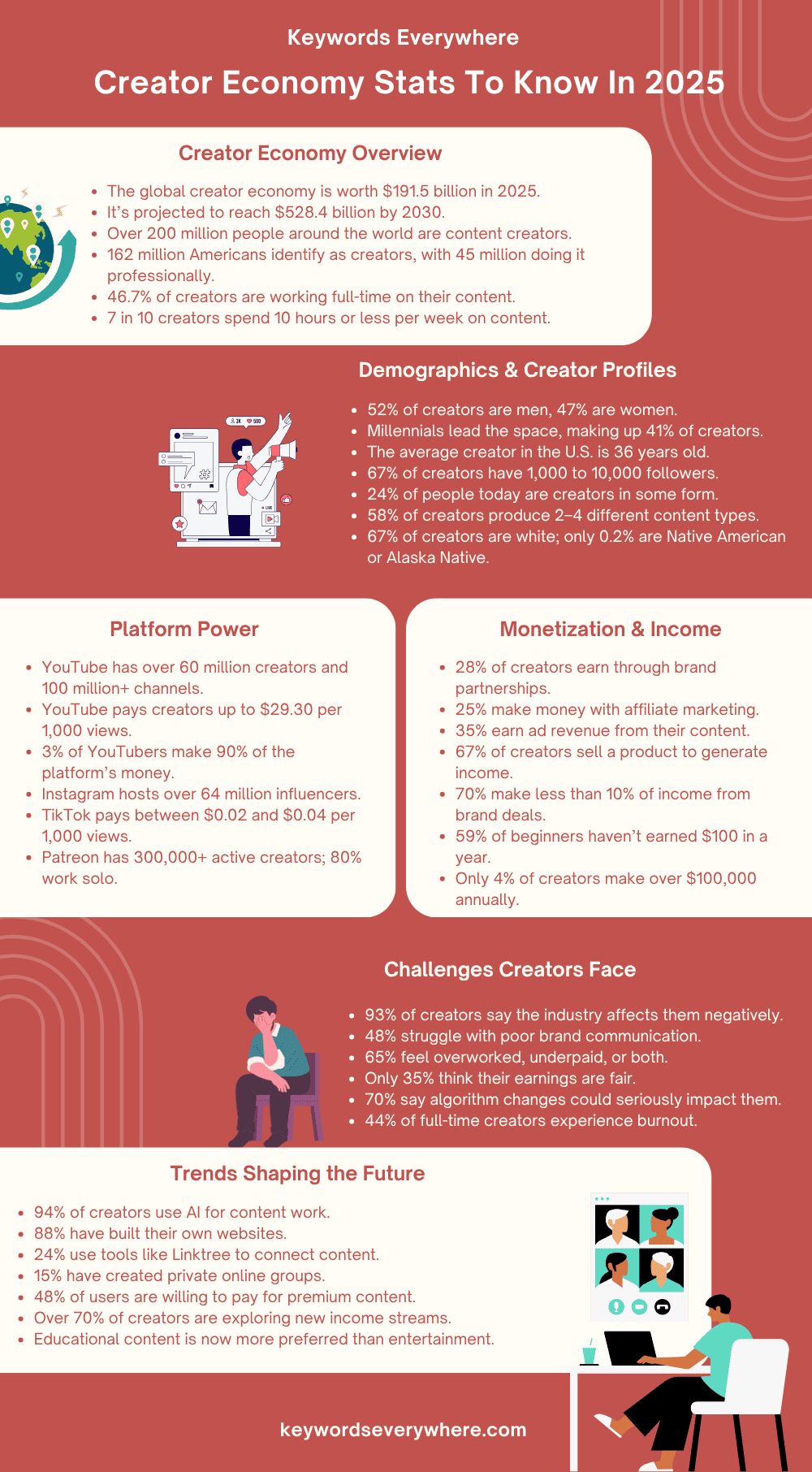
What is the creator economy?
The creator economy is the fast-growing world built around people who make content online—think YouTubers, podcasters, Instagram influencers, TikTok stars, newsletter writers, Twitch streamers, and even online course creators.
These individuals use their skills, stories, and creativity to build loyal communities and earn a living through platforms like YouTube, TikTok, Instagram, Patreon, and many others.
But creators don’t operate alone.
The creator economy also includes the brands that partner with them, the tech platforms that host their content, and the tools and services that help them grow and make money.
Whether it’s through brand deals, ad revenue, fan subscriptions, affiliate sales, or digital products, today’s creators have more ways than ever to turn content into income.
This once-niche space has grown into a massive industry worth hundreds of billions, and it’s only just getting started.
Top Creator Economy Stats
What’s really going on in the creator economy right now?
Whether you’re a brand, a beginner creator, or just curious about the money and momentum behind online content, these top creator economy stats give you a quick, eye-opening look at where things stand.
1. The global creator economy is now worth over $191 billion, and it’s expected to grow past $525 billion by the year 2030.
2. There are more than 200 million content creators around the world today.
3. In the U.S. alone, 162 million people consider themselves content creators, and over 45 million of them do it professionally.
4. Almost half of all creators—about 46.7%—are working full-time on their content careers.
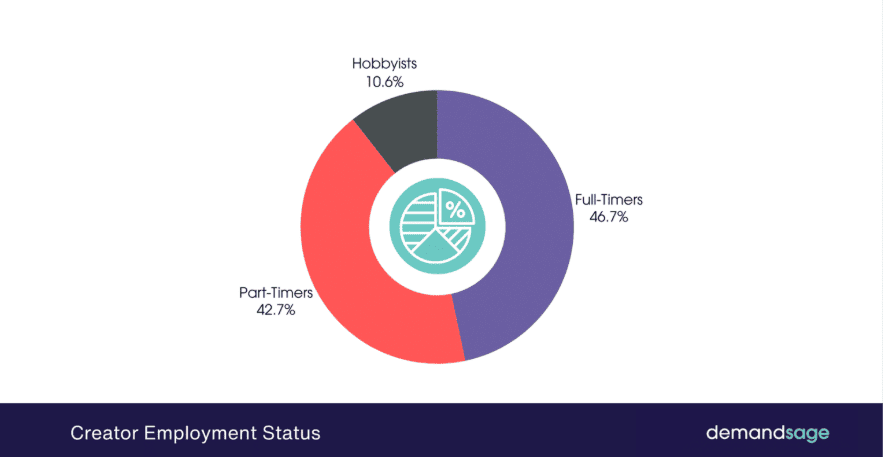
Around half of content creators work full-time
5. On average, it takes a creator around six and a half months to earn their first dollar from content.
6. 7 out of 10 creators spend 10 hours or less per week making content, showing that many start out part-time.
7. Around 30% of Gen Z in the U.S. and the U.K. say they want to be YouTubers or vloggers when they grow up.
8. The largest group of creators comes from small businesses, with over 168 million involved in content creation.
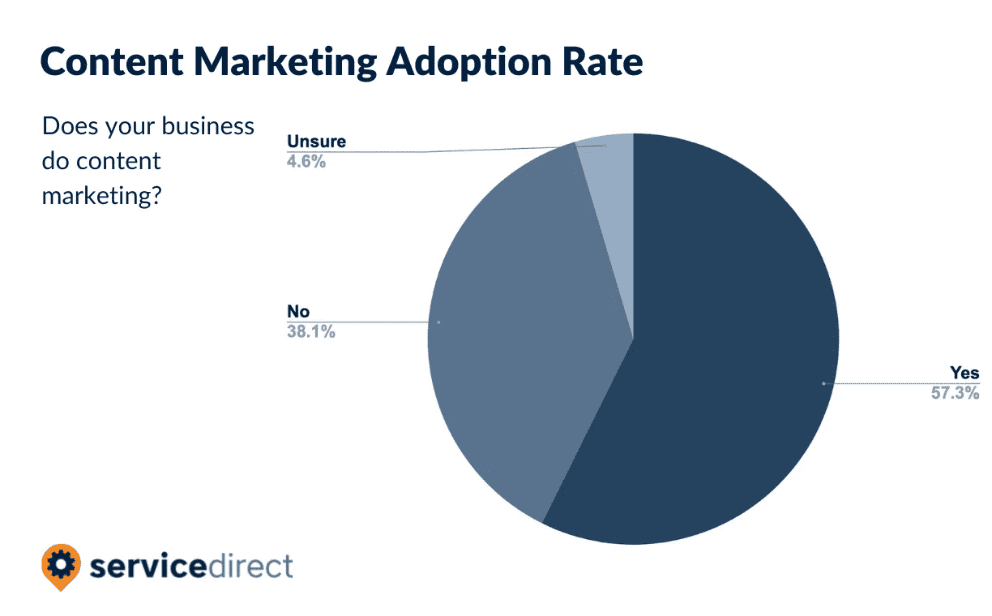
More than 50% of businesses do content marketing
9. More than three-quarters of creators—77%—say they worry about relying too much on social media platforms for their income.
10. YouTube leads the way in the creator world, with over 60 million creators and more than 100 million channels worldwide.
11. According to Keywords Everywhere trend data, since the COVID-19 pandemic, more people have been searching for “how to become a content creator,” showing just how much interest in this space has grown as the world has become more digital.
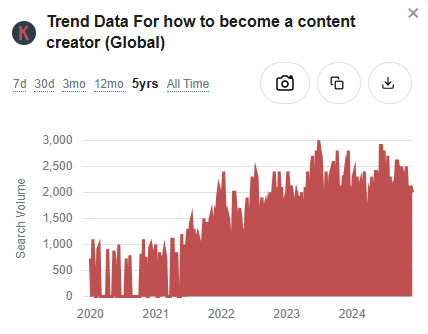
Creator Economy Market Size Stats
The creator economy is no longer just a trend. It’s a booming global industry.
But just how big is it?
With billions of dollars flowing through platforms, sponsorships, and fan-supported content, understanding the size of this digital world can help put everything into perspective.
These creator economy stats show how fast it’s growing and what the future might hold.
12. The global creator economy is currently worth about $191.5 billion, and it’s growing fast. At its current pace, it’s expected to reach over $528 billion by 2030.
13. From 2023 to 2030, the creator economy is set to grow from $127.6 billion to $528.4 billion, growing by more than four times in just seven years.
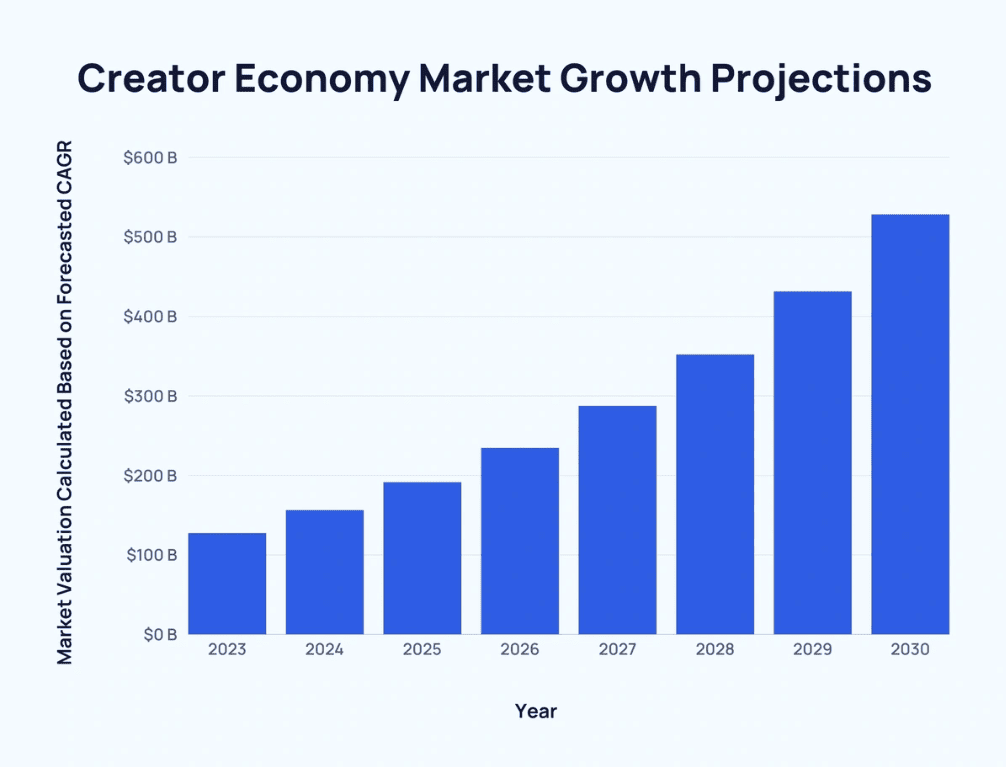
Creator economy market growth projections
14. Right now, North America leads the way in the creator space, holding around 40% of the entire market.
15. As of 2025, the North American creator economy is worth about $32.3 billion, which is more than twice the size of Europe’s market, currently valued at $15.4 billion.
16. By 2030, North America’s creator economy is expected to skyrocket to nearly $143 billion—that’s more than the combined total of Asia & Oceania ($52.2B), Europe ($41.2B), and South America ($14.7B).
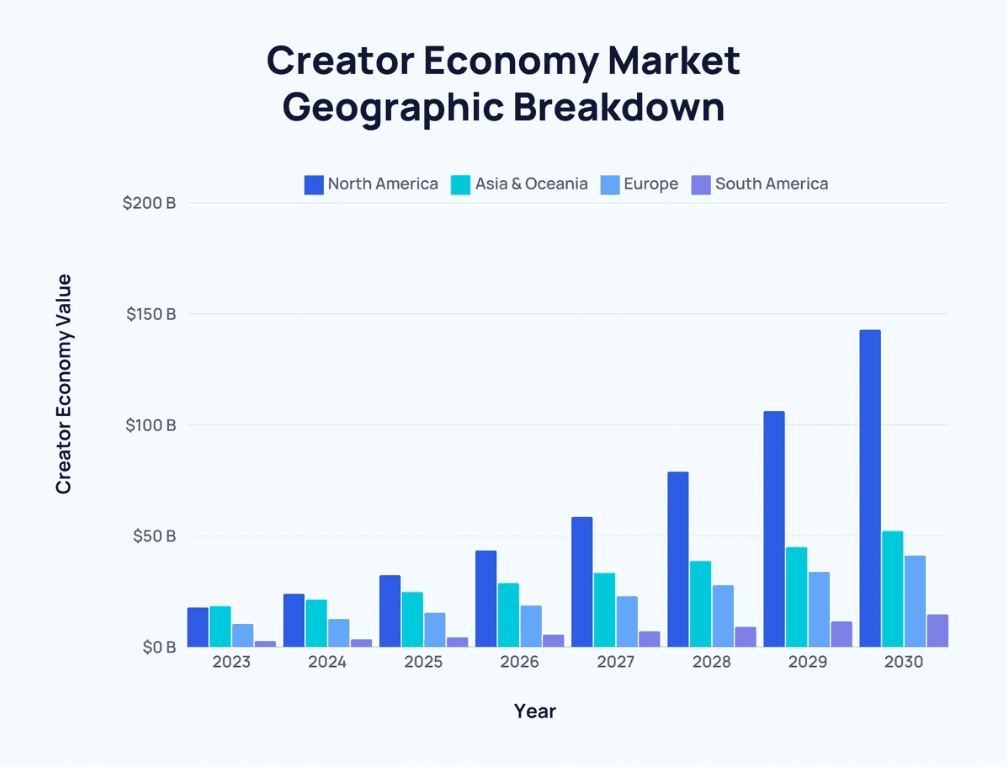
Creator economy market geographic breakdown
Creator Demographics Stats
Who are today’s content creators, and what does their world look like behind the screen?
The faces of the creator economy are incredibly diverse, from teenagers filming dances to parents sharing daily routines.
These creator economy stats take a closer look at who’s making content, where they’re from, and how their backgrounds are shaping this growing space.
17. Just over half of content creators—about 52%—are men. Women make up 47%, and around 1% of creators don’t identify as either.
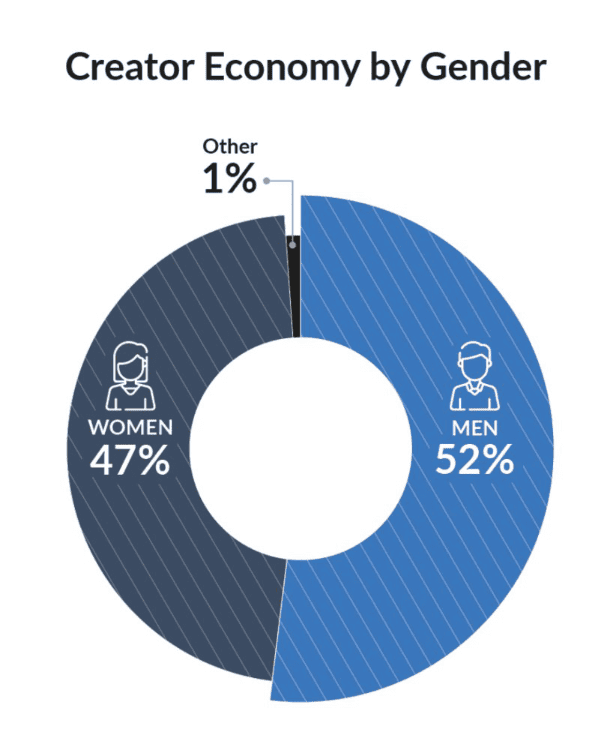
Creator economy by gender
18. Many people assume Gen Z dominates the creator space, but it’s actually millennials who lead the way, making up 41% of all creators. Gen X comes next with 30%, followed by boomers and older generations at 15%.
19. In the U.S., the average age of a content creator is around 36. Over a third of creators are over 40, another third are in their 30s, and about 30% fall in the 20 to 30 age range.
20. Most creators have small but loyal followings—67% have between 1,000 and 10,000 followers. Only 21% have between 10,000 and 100,000, and just 2% have more than 100,000 followers.
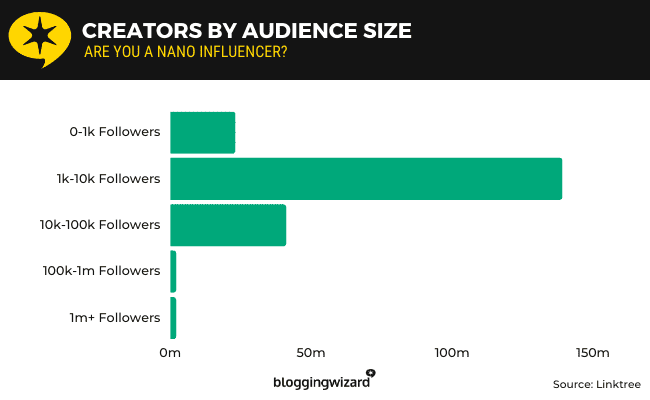
Creators by audience size
21. In the U.S., 67% of creators are white. About 10% are Asian, while Native American and Alaska Native creators make up just 0.2% of the total.
22. Nearly 1 in 4 people today are content creators in some form. That shows just how common—and accessible—this path has become.
23. Half of all creators say they started making content to express themselves, not to make money. For many, the passion came first and the income followed later.
24. About one-third of creators prefer to focus on one type of content, but most—roughly 58%—create between two and four different content types.
25. More than 25% of full-time creators say their favorite way to measure success is by watching their follower count grow.
26. Over 35% of full-time creators choose to create content focused on entrepreneurship and business topics.
27. More than 1 in 5 hobbyist creators enjoy making content centered around personal development and growth.
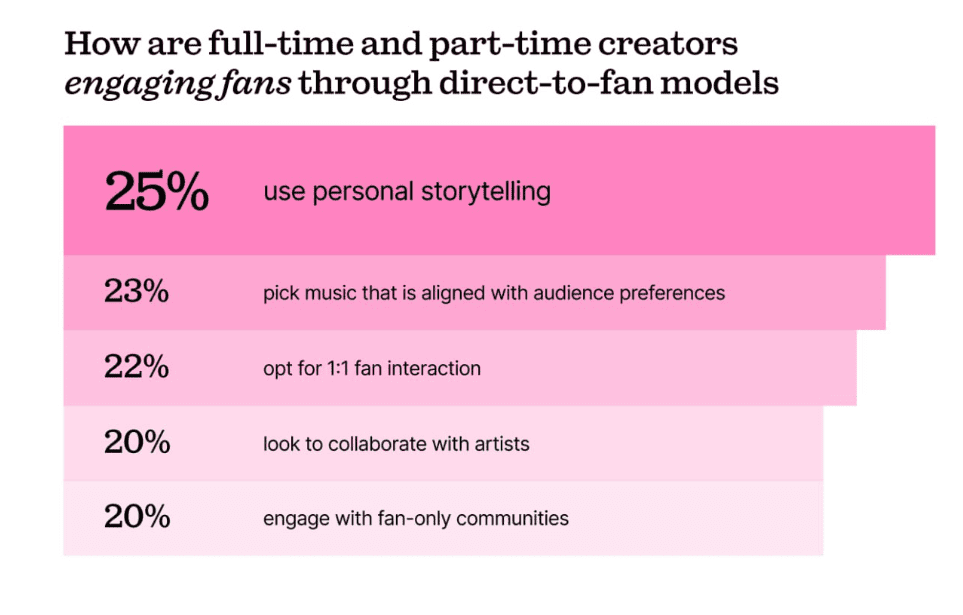
How creators are engaging fans through direct-to-fan models
Creator Economy Platform Stats
Not all platforms are created equal—some dominate while others quietly grow in niche spaces.
Whether it’s YouTube, TikTok, Instagram, or a newer platform, where creators choose to post can shape their reach and income.
Here, we dive into which platforms are leading the way and how creators are using them to grow and connect.
28. With 2.2 billion people using it every month, YouTube remains one of the most-used platforms for creators around the world.
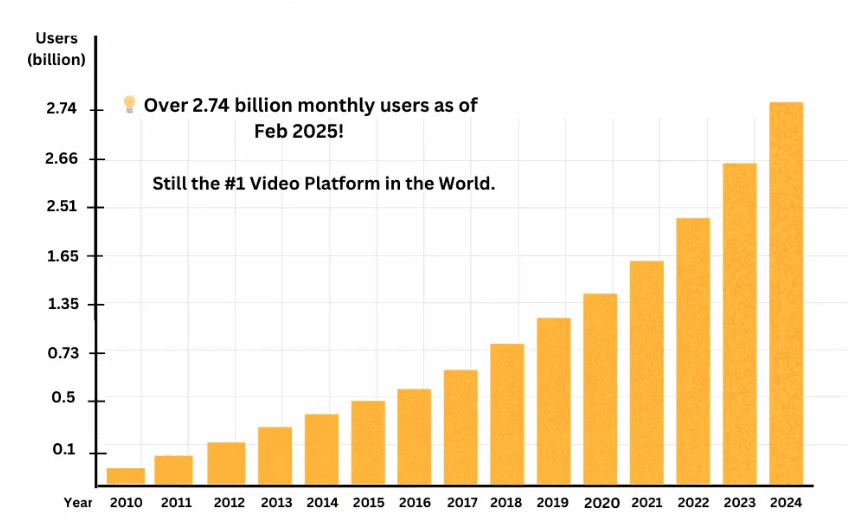
YouTube monthly users
29. Creators in the YouTube Partner Program can make anywhere between $1.61 to $29.30 for every 1,000 views, depending on what kind of content they make.
30. Just 3% of YouTubers take home a whopping 90% of the money made on the platform, showing how top-heavy the earnings really are.
31. Most influencers on YouTube are women—about 69%—while men make up the remaining 31%.
32. Instagram is now one of the top choices for influencers and creators, with 57% of all brand deals happening right on the app.
33. There are over 64 million influencers on Instagram across the globe. Surprisingly, only a tiny number—just 0.05%—are celebrities, while the vast majority (over 91%) are nano influencers with small, dedicated audiences.
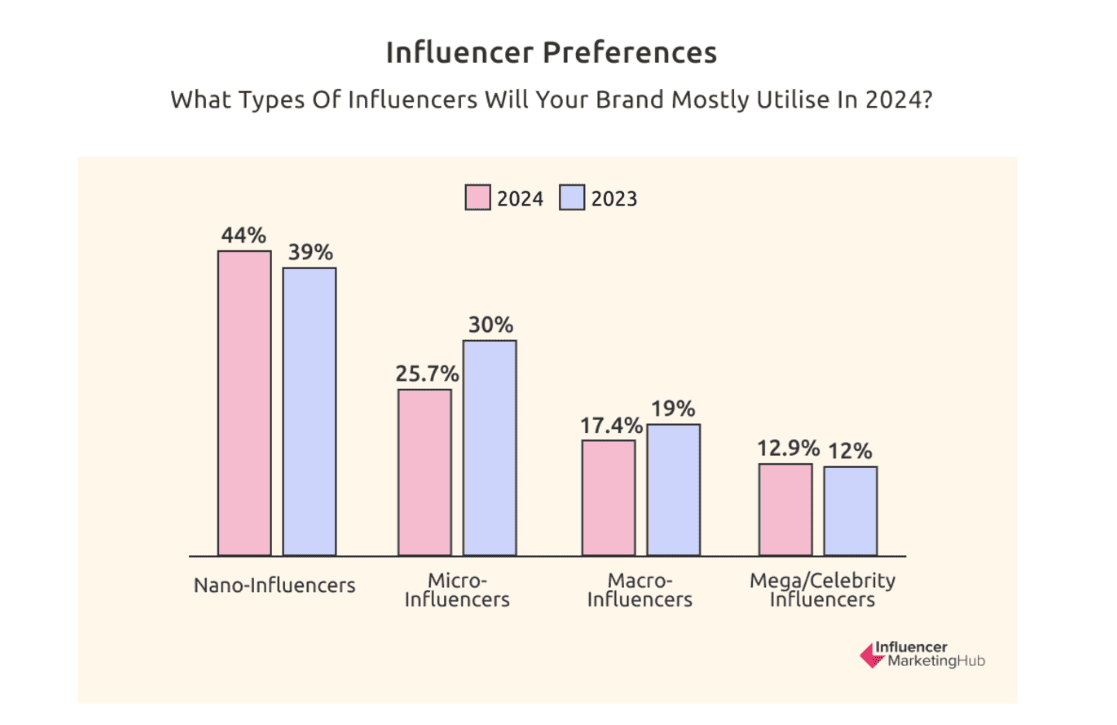
Instagram influencer preferences
34. On average, influencers earn about $2,970 a month. Micro-influencers typically bring in $1,420, while those with massive followings can make over $15,000 a month.
35. TikTok is the top pick for 26% of content creators, thanks to its fast growth and viral potential.
36. TikTok pays creators about $0.02 to $0.04 for every 1,000 views. If a video hits a million views, it could earn between $20 and $40.
37. In late 2023, TikTok closed its $1 billion creator fund and shifted focus to newer creator programs with better earning opportunities.
38. More than half of brands—56%—now prefer to work with influencers on TikTok over other platforms.
39. Patreon gives creators a way to earn directly from their fans through memberships, and so far, creators have earned around $1 billion on the platform.
40. Patreon has over 300,000 active creators. About 80% work alone, 11% have a team, and another 8% work solo but collaborate with non-creators.
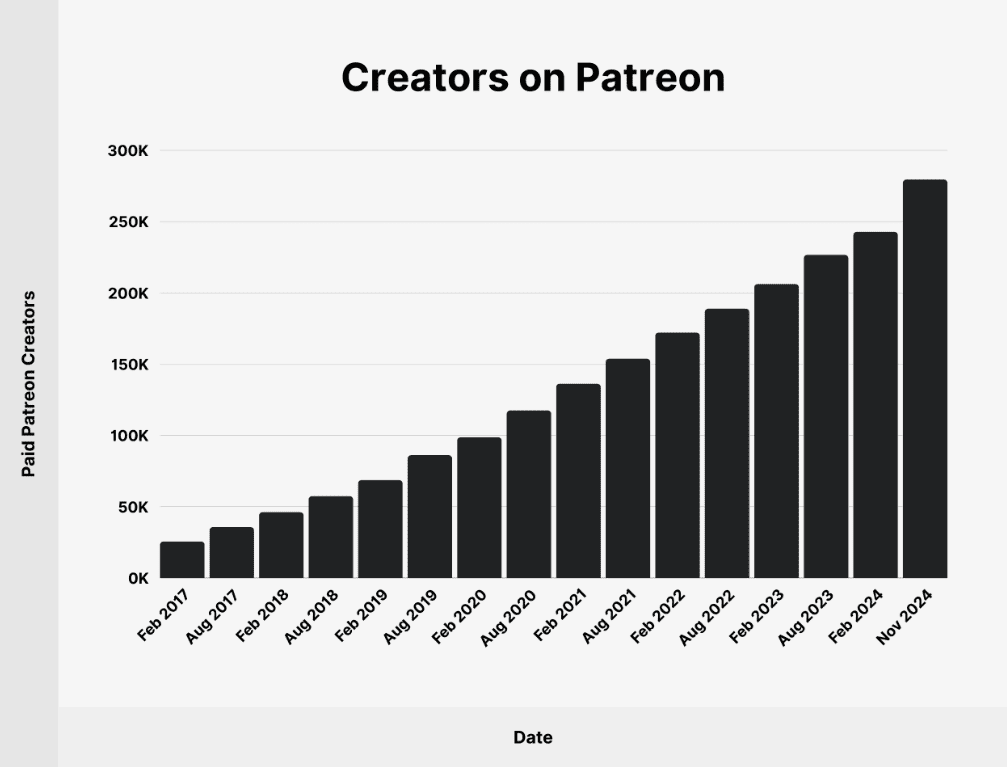
Creators on Patreon
41. The average creator on Patreon makes around 40% of their total income from the platform.
42. OnlyFans has more than 1.5 million creators, and the platform itself has pulled in over $6.6 billion in revenue.
Creator Monetization Stats
Making money as a creator isn’t as simple as posting a video or sharing a story.
There are dozens of ways creators earn—from brand deals to digital products to fan subscriptions—and they’re getting more creative every year.
These creator economy stats break down how creators turn passion into profit across different platforms and income streams.
43. Around 28% of creators earn money through paid promotions and brand partnerships, which remains one of the most common income sources.
44. About a quarter of creators—25%—make money through affiliate marketing, and those with a specific niche seem to do better: 15% of niche creators use affiliate links compared to 10% without a focused topic.
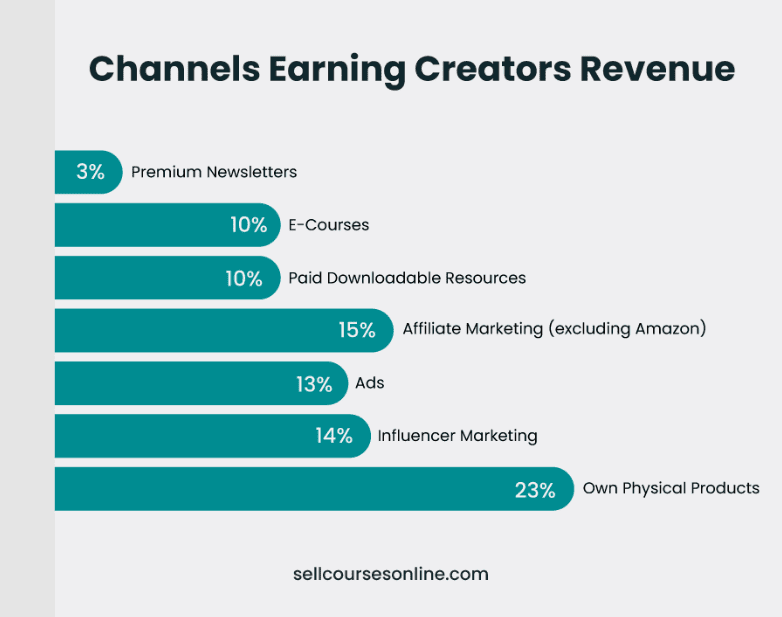
Channels earning creators revenue
45. 35% of creators earn income through ads placed on their videos, blogs, or other online content platforms.
46. Among creators who’ve found ways to make money from their audience, 67% sell a product—whether digital or physical—to boost their income.
47. Despite the popularity of brand deals, 70% of creators make less than 10% of their total income from those partnerships.
48. Getting started can be tough: 59% of beginner creators haven’t earned more than $100 in a year, and over a third still make under $1,000.

Beginner creators and monetization
49. Photography and photo editing are the most monetized creative skills, with 26% of creators earning from them. Creative writing (16%) and visual arts (15%) follow closely, while only 6% of creators make money from podcasting.
50. Nearly half—45%—of creators use more than one income stream, combining brand deals, ads, products, or subscriptions to earn more steadily.
51. Only about 4% of creators break into the six-figure club, earning over $100,000 a year.
52. Interestingly, more than half of creators earning between $50K and $100K per year spend fewer than 10 hours a week creating content.
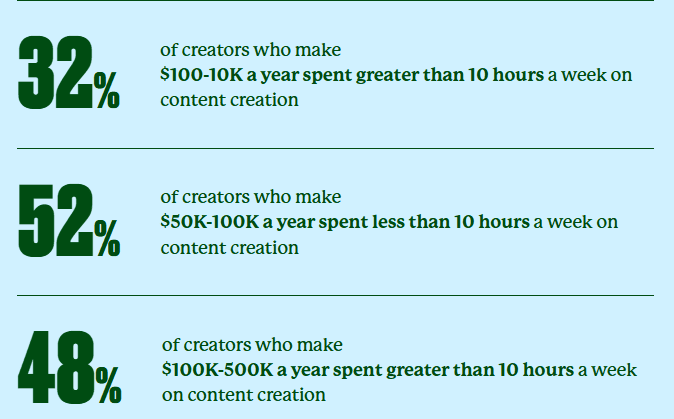
Creators annual income and time spent
53. In the U.S., the average income range for content creators is between $36,000 and $58,500, with the top earners pulling in up to $74,500 a year.
54. In a recent study of 1,500 creators earning through social media, 30% said TikTok brings in the most income for them, while 25.8% said YouTube is their biggest moneymaker.
Creator Challenges Stats
Behind the highlights and viral moments, creators face real and growing challenges.
From unpredictable algorithms to burnout and income uncertainty, the path isn’t always smooth.
These creator economy stats shine a light on the struggles many creators face every day, giving a more honest view of what it takes to succeed in this space.
55. A huge 93% of creators say being in the industry has had a negative effect on their lives in some way.
56. When working with brands, many creators run into real challenges. Nearly half—48%—say the biggest issue is poor communication or unclear expectations.
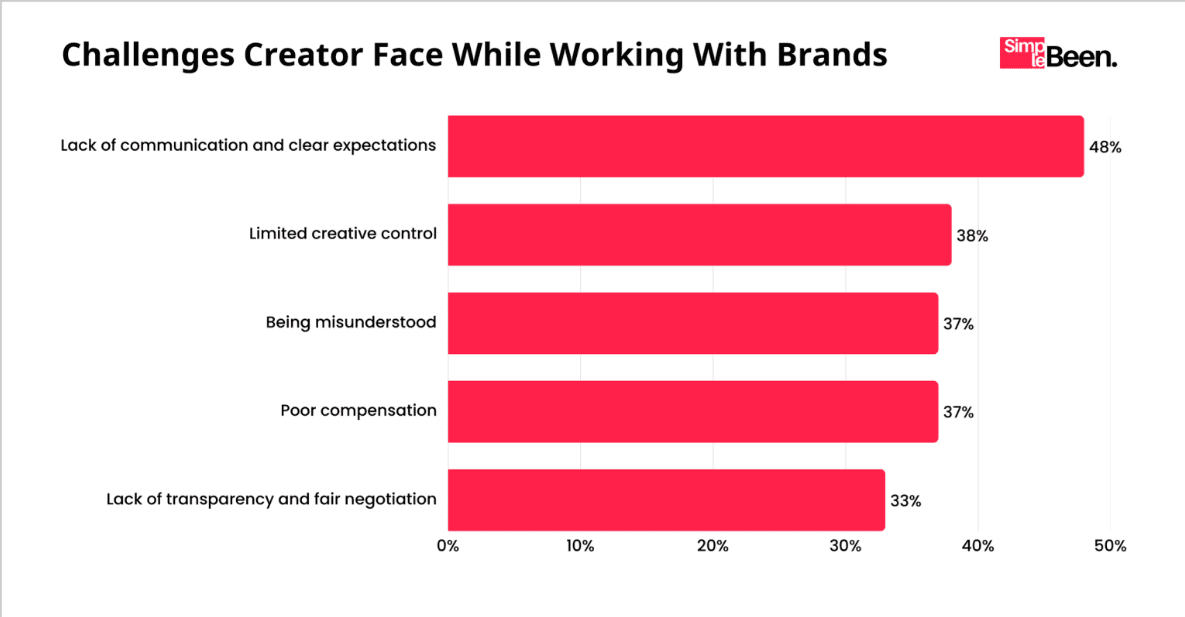
Challenges creator face while working with brands
57. Around 65% of creators feel either overworked, underpaid, or both as they try to keep up with the demands of constant content creation.
58. Only 35% of creators believe they’re earning a fair amount for the time and effort they’re putting in.
59. About one in four creators—25%—aren’t confident they’ll ever hit their financial goals through content creation.
60. 70% say that if a platform’s algorithm suddenly changes, it could seriously affect their lives, especially their income.
61. A third of creators have felt deep frustration or even anger toward major social media platforms due to unclear rules or sudden changes.
62. Among full-time creators, 13% regularly experience very high levels of stress. Part-time creators feel it too, though a bit less, at around 9%.
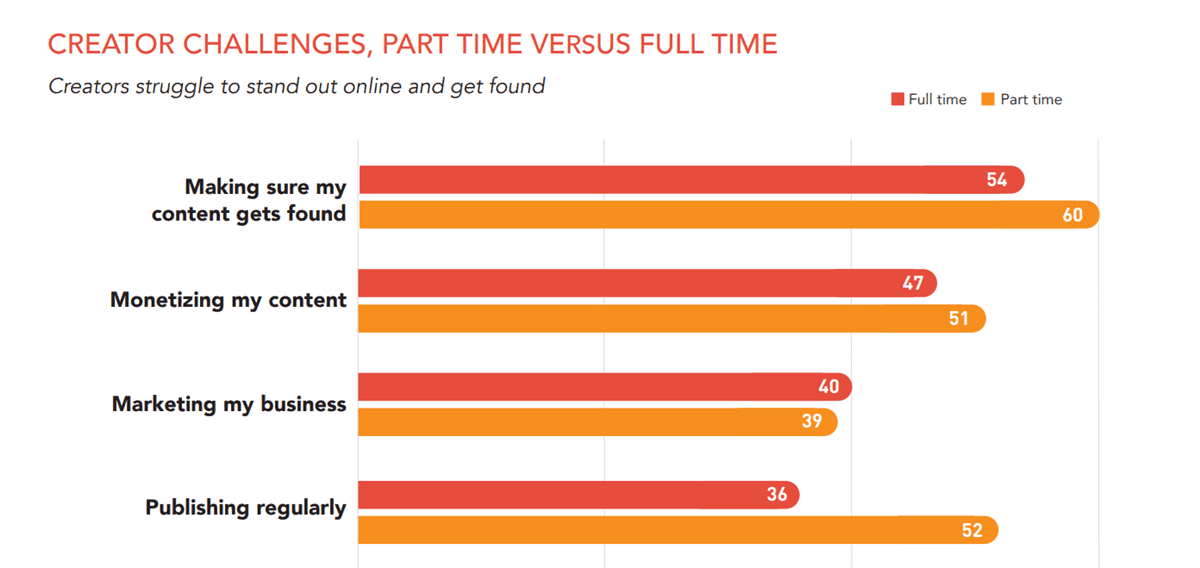
Creator challenges, part-time vs full-time
63. More than 45% of full-time creators say the pressure to stay active on every platform causes burnout. Around 44% also deal with content fatigue—feeling mentally drained from always needing to create.
Creator Economy Trends and Forecast Stats
What’s next for the creator economy?
As new tools emerge and audiences shift, trends are shaping how creators work, earn, and grow.
Whether it’s the rise of micro-creators or the spread of AI-generated content, these creator economy stats offer a glimpse into where things are heading and what to expect in the years ahead.
64. Nearly all creators—over 94%—are now using AI to help with at least one part of their work.
65. For creators who run membership communities, 75% are already making money from them.
66. A large majority—88%—have built their own websites to take control of their brand, connect with their audience, and create new income streams.
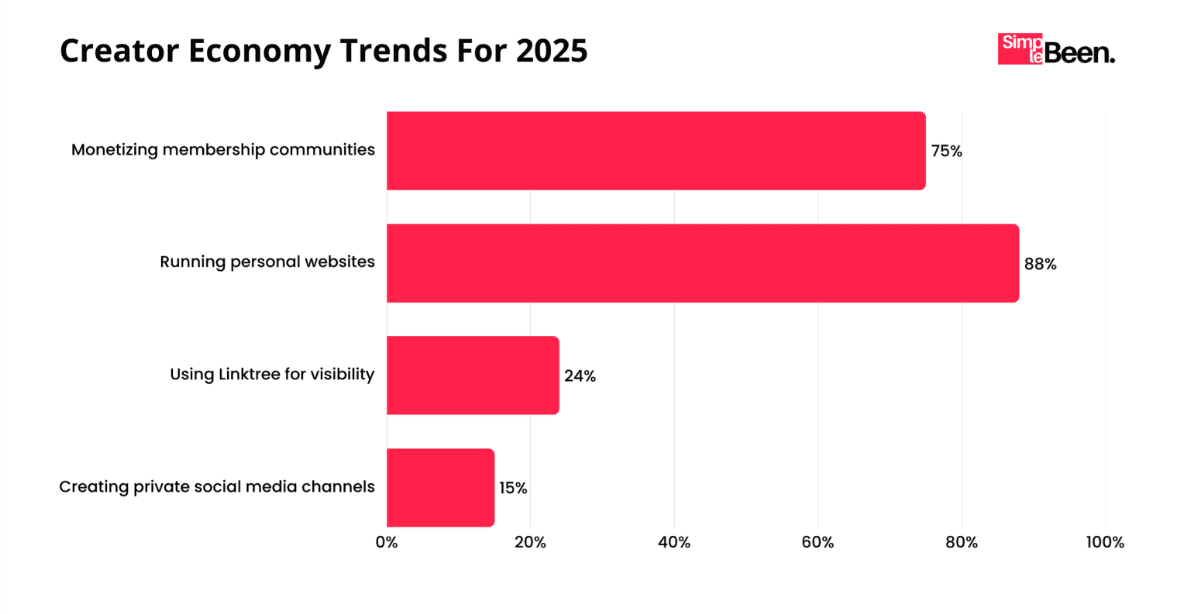
Creator economy trends
67. About 24% of creators use tools like Linktree to bring all their content into one easy-to-navigate hub.
68. 15% have gone a step further and created private social media groups or channels where their most loyal followers can get more personal and exclusive content.
69. 48% of social media users say they’d be willing to pay for premium subscriptions.
70. Over 70% of people are thinking about adding new ways to make money on top of what they already earn, which is helping drive the creator economy forward.
71. More than twice as many social media users now say they prefer educational content over pure entertainment.
Conclusion
The creator economy isn’t slowing down anytime soon.
With more people creating content and more brands investing in influencer marketing, the space is growing faster than ever.
By 2030, it’s expected to pass $528 billion worldwide, driven by demand for user-generated content and new ways for creators to earn.
As social media continues to evolve, so will the opportunities for those bold enough to build something of their own.


